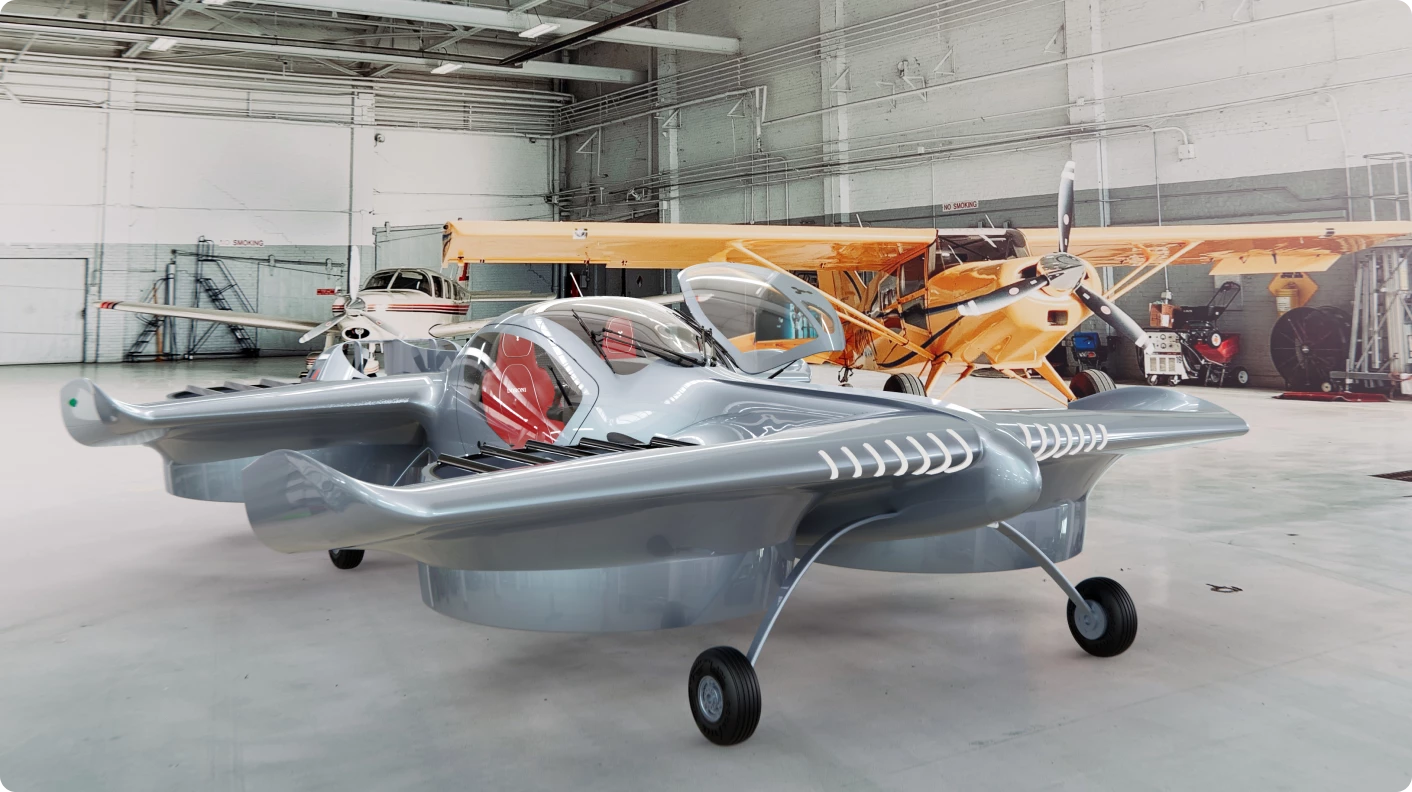Doroni has hit a milestone in the development of its two-seat, US$195,000 buy 'n' fly eVTOL aircraft. Recently, CEO Doron Merdinger was confident enough to hop in and put his own butt on the line, taking a prototype for its first manned flight.
The H1 is an interesting-looking design – a bubble cabin lifted by eight large, ducted coaxial propellers mounted into front and rear wings of roughly equal size. As with some other buy 'n' fly personal eVTOLs like the SkyFly Axe and Air One, these wings are tilted upwards; it'll gather speed from a hover by tilting forward, drone-style, and the wings are designed to be level and develop lift at that angle.
Unlike those two examples, however, Doroni is also fitting this thing with a horizontal propulsion system in the form of two rear-mounted pusher props. We expressed our uncertainty about exactly how this has been implemented when we first covered the Doroni H1 in September last year.

The prototype just flown, however, is pretty bare-bones. There's no wings, no pusher props, no windows and very little bodywork other than the basic cabin cover. The rear landing gear, if that's what you'd call it, looks like a repurposed barbell, and there appears to be a battery box where the passenger seat is supposed to go. It's bare-bones stuff.
Still, it flies, and it flies with a person in it. It's not a long flight, and it looks pretty wobbly despite the fact that it's indoors, but a manned flight it most definitely is.
You can watch it yourself in the video below, in which the company helpfully superimposes the bodywork so you can see what it'll look like when it's finished. We always enjoy a good over-exuberant team celebration shot or two, and yep, Doroni is happy to supply.
"I am absolutely thrilled by the remarkable success of our team in completing the first-ever US manned test flight of a personal 2-seater eVTOL," says Merdinger in a YouTube description box. "It felt like floating on a cushion of air, experiencing a level of freedom and excitement that is unparalleled. This is just the beginning for us, and I cannot contain my anticipation to deliver these incredible vehicles to the world. The technology we have developed is truly unlike anything else in the aerospace industry, and it is poised to revolutionize personal transportation in ways we could only dream of before."
We congratulate the team on getting this far, and look forward to seeing how it goes once it's all put together and capable of cruising. Doroni promises a 60-mile (~100-km) range per charge, cruising at 100 mph (160 km/h) and reaching top speeds around 140 mph (225 km/h).
The company hopes to get the design tested and FAA-certified as a Light Sport Aircraft in 2024, with customer deliveries to follow in 2025. Pilots will need a minimum of 20 hours' training to fly one.
Source: Doroni via FutureFlight






